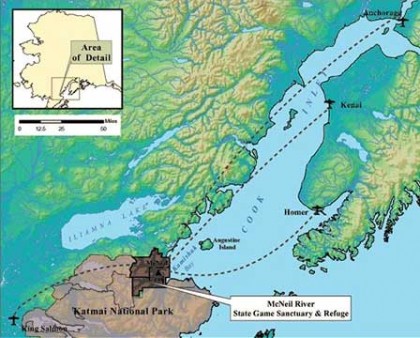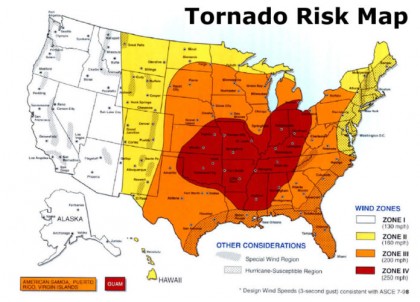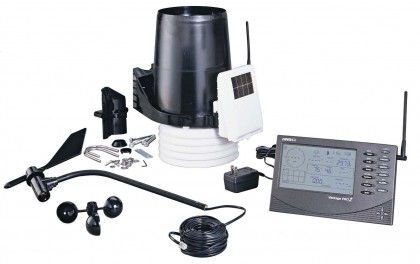Imbolc (New Life) Moon
 71 times Valentine’s Day and I have shared a moment. This was a quiet one, a good one. Decided I would cook Kate a special meal. In all our years together I’d never done that. It felt great. Went to Tony’s Market (upscale groceries, great meat). Bought a ribeye and some model thin asparagus. Kate found some tiny potatoes. Candles and jazz from Kate’s Pandora Satchmo and Ella channel. Just right. Later, a dusting of snow.
71 times Valentine’s Day and I have shared a moment. This was a quiet one, a good one. Decided I would cook Kate a special meal. In all our years together I’d never done that. It felt great. Went to Tony’s Market (upscale groceries, great meat). Bought a ribeye and some model thin asparagus. Kate found some tiny potatoes. Candles and jazz from Kate’s Pandora Satchmo and Ella channel. Just right. Later, a dusting of snow.
Based partly on the Rumi poem* I posted, sent to me by Tom Crane after I wrote about that old debil melancholy,I’ve decided to lean into my uncertainty and ambiguity. Life purpose seems to be up for reconsideration. Or, perhaps, reconstruction, reimagining. Or, best, reenchantment. But, instead of forcing my way into a new life, I’m letting it come to me. Waiting. Testing. Entertaining.
Bits and pieces that have floated in. All my 70’s, barring some very unusual event, will be lived in Colorado, hopefully in the Rockies. So, this decade, the one I’m now firmly in, is a Western, arid lands, mountain decade. It also has a strong Jewish accent, spoken in a Beth Evergreen dialect.
 At one point concentrating on Colorado and the west. At another, more Taoism. Stop writing novels. Read more. A lot more. A year of the Tao or a year of the West. Travel. In our immediate region. As much as possible. Continue with the sumi-e. Take classes? Go to a Progoff workshop?
At one point concentrating on Colorado and the west. At another, more Taoism. Stop writing novels. Read more. A lot more. A year of the Tao or a year of the West. Travel. In our immediate region. As much as possible. Continue with the sumi-e. Take classes? Go to a Progoff workshop?
Not sure where this is going, but for some reason turning 71 has made me unsettled, willing to reject or set aside old purposes, find new ones. Or, possibly, reaffirm current ones. I’ll know when I’m done with this, moving into a new chapter. But, I don’t know when that will be.
*”This being human is a guest house.
Every morning a new arrival.
A joy, a depression, a meanness,
some momentary awareness comes
As an unexpected visitor.
Welcome and entertain them all…” Rumi, The Guest House



 The first, perhaps the simpler, has been about how to describe our environment in the most economical way possible. I know, I didn’t say it was deep, just persistent. I’ve come to these nouns: sky, evergreens, slope, rock, streams. Yes, it leaves out houses and wildlife, roads and cars. But. The context for life up here can be described using those five words.
The first, perhaps the simpler, has been about how to describe our environment in the most economical way possible. I know, I didn’t say it was deep, just persistent. I’ve come to these nouns: sky, evergreens, slope, rock, streams. Yes, it leaves out houses and wildlife, roads and cars. But. The context for life up here can be described using those five words. If the present is all we ever have, and it is, then the journeys we take, no matter how mundane, are also the present at the time we are on them. There is no future. We only imagine it. There is no past, it is a memory. There is only this moment, keys clacking, letters and words appearing on the screen, a car going by, Black Mountain and blue sky out the window.
If the present is all we ever have, and it is, then the journeys we take, no matter how mundane, are also the present at the time we are on them. There is no future. We only imagine it. There is no past, it is a memory. There is only this moment, keys clacking, letters and words appearing on the screen, a car going by, Black Mountain and blue sky out the window.
 Solomon recounts a visit to the McNeil River Sanctuary. He won a chance to visit this protected spot for the Alaskan brown bear in an annual lottery. The fairly long quote below has rattled around in my mind since I read it a week or so ago. It reveals, at least to me, a path we could walk to accomplish Thomas Berry’s Great Work for our time, creating a sustainable human presence on this planet, our home in the wildness of space.
Solomon recounts a visit to the McNeil River Sanctuary. He won a chance to visit this protected spot for the Alaskan brown bear in an annual lottery. The fairly long quote below has rattled around in my mind since I read it a week or so ago. It reveals, at least to me, a path we could walk to accomplish Thomas Berry’s Great Work for our time, creating a sustainable human presence on this planet, our home in the wildness of space.




 After carrying the two cushions and the remaining fabric, about 3 yards, out to the car, Kate and I drove off in a southeasterly direction toward the high plains town of Elizabeth. We turned east at Castle Rock on Colorado 86. 86 heads resolutely away from the mountains, which are in the rearview the whole way. Elizabeth is a small agricultural town, known to any Midwesterner in its general outline and types of stores and shops. That’s why I said not long after we moved that the Midwest washes up here against the solid reef of the Rocky Mountains and finally disappears. In Elizabeth Kate and I were on familiar turf.
After carrying the two cushions and the remaining fabric, about 3 yards, out to the car, Kate and I drove off in a southeasterly direction toward the high plains town of Elizabeth. We turned east at Castle Rock on Colorado 86. 86 heads resolutely away from the mountains, which are in the rearview the whole way. Elizabeth is a small agricultural town, known to any Midwesterner in its general outline and types of stores and shops. That’s why I said not long after we moved that the Midwest washes up here against the solid reef of the Rocky Mountains and finally disappears. In Elizabeth Kate and I were on familiar turf. Cushions, a frozen beef quarter, groceries these are a few of the physical objects that we still use our truck to retrieve. I imagine at some point we’ll have an economy that divides itself between physical objects that have to be moved, including your own body to doctor’s appointments, for instance, and physical objects that can be purchased online and delivered. I know we’re already there with online sales, but I mean a situation where the economy consciously organizes itself by these categories. Right now we have a transitional situation between brick and mortar businesses built under the old, we have to go there to get it paradigm, and an online retail economy powered to our homes by the USPS, Fedex or UPS. It’s clumsy and not always transparent which is better, online or physical shopping. I think that will sort itself out over the next decade or so, maybe a bit more.
Cushions, a frozen beef quarter, groceries these are a few of the physical objects that we still use our truck to retrieve. I imagine at some point we’ll have an economy that divides itself between physical objects that have to be moved, including your own body to doctor’s appointments, for instance, and physical objects that can be purchased online and delivered. I know we’re already there with online sales, but I mean a situation where the economy consciously organizes itself by these categories. Right now we have a transitional situation between brick and mortar businesses built under the old, we have to go there to get it paradigm, and an online retail economy powered to our homes by the USPS, Fedex or UPS. It’s clumsy and not always transparent which is better, online or physical shopping. I think that will sort itself out over the next decade or so, maybe a bit more. Jon put brackets around the pole for the Vantage pro2 weather station. Secured to the deck now with the anemometer up maybe 20 feet off the ground, I’ll attach the weather station itself to the pole this morning. It’s out there right now though and functioning, sending information back to the console.
Jon put brackets around the pole for the Vantage pro2 weather station. Secured to the deck now with the anemometer up maybe 20 feet off the ground, I’ll attach the weather station itself to the pole this morning. It’s out there right now though and functioning, sending information back to the console. This system is not as important on Shadow Mountain as it was in Andover because we have no orchard or a garden, but it feeds a lifelong interest in the weather, a hobby of sorts. Alexandria, Indiana, where I was raised, is in tornado alley, as is my home state of Oklahoma. The weather could get you.
This system is not as important on Shadow Mountain as it was in Andover because we have no orchard or a garden, but it feeds a lifelong interest in the weather, a hobby of sorts. Alexandria, Indiana, where I was raised, is in tornado alley, as is my home state of Oklahoma. The weather could get you.

 When I post a picture like this one, in other words, you think you’re looking at many aspen trees on the side of Black Mountain. In fact you’re looking at only a few distinct trees with many, many trunks.
When I post a picture like this one, in other words, you think you’re looking at many aspen trees on the side of Black Mountain. In fact you’re looking at only a few distinct trees with many, many trunks. The aspen grove is a wonderful example of the confusion our senses can bring to us. When we look at the grove, we see individual trees. But, no. There is an occult connection, hidden below the earth’s surface, that binds them together and makes them one. It’s not hard, when contemplating the aspen grove, to return to the angel with the flaming sword guarding the gates of Eden. As I suggested a few posts below, that angel can be seen as language, which both conceals and reveals; it reveals itself as language, but conceals the pathway to the Tree of Life. Behind the angel lies paradise.
The aspen grove is a wonderful example of the confusion our senses can bring to us. When we look at the grove, we see individual trees. But, no. There is an occult connection, hidden below the earth’s surface, that binds them together and makes them one. It’s not hard, when contemplating the aspen grove, to return to the angel with the flaming sword guarding the gates of Eden. As I suggested a few posts below, that angel can be seen as language, which both conceals and reveals; it reveals itself as language, but conceals the pathway to the Tree of Life. Behind the angel lies paradise.

 In a localized fire, mitigation can help a lot. Our house is now pretty well protected with the ignition zone, about 30 feet out from the house, cleared of trees and the trees just at that zone and somewhat further out have had their branches cut to above 10 feet. We have fire-rated shingles and I mow the fines. I’ve not had the gutters cleaned, which is a potential problem, but we’ll get to that next spring. With a flat, short driveway, access from a well tended county road and mitigation our house stands a very good chance of survival. In a crown fire though, no combination of mitigation strategies will keep it standing.
In a localized fire, mitigation can help a lot. Our house is now pretty well protected with the ignition zone, about 30 feet out from the house, cleared of trees and the trees just at that zone and somewhat further out have had their branches cut to above 10 feet. We have fire-rated shingles and I mow the fines. I’ve not had the gutters cleaned, which is a potential problem, but we’ll get to that next spring. With a flat, short driveway, access from a well tended county road and mitigation our house stands a very good chance of survival. In a crown fire though, no combination of mitigation strategies will keep it standing.